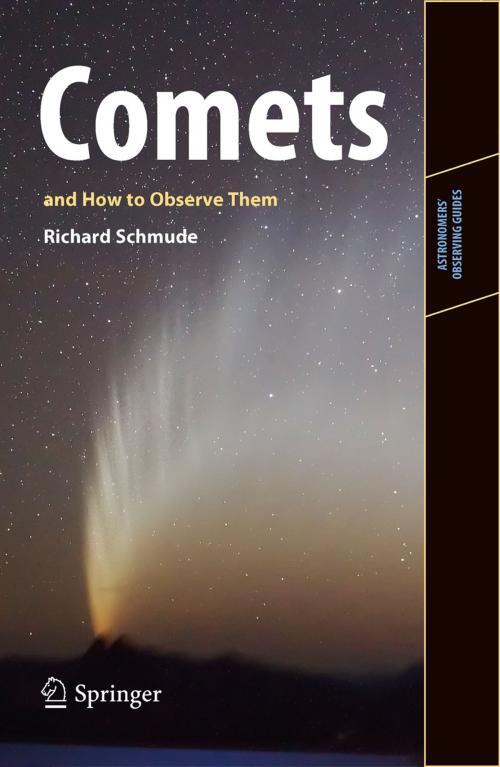| Author: | Richard Schmude, Jr. | ISBN: | 9781441957900 |
| Publisher: | Springer New York | Publication: | September 20, 2010 |
| Imprint: | Springer | Language: | English |
| Author: | Richard Schmude, Jr. |
| ISBN: | 9781441957900 |
| Publisher: | Springer New York |
| Publication: | September 20, 2010 |
| Imprint: | Springer |
| Language: | English |
Comets have inspired wonder, excitement and even fear ever since they were first observed. But they are important members of the solar system, that contain material from early in the life of the system, held in deep-freeze. This makes them key in our understanding of the formation and evolution of many Solar System bodies.
Recent ground- and space-based observations have changed much in our understanding of comets. Comets, and How to Observe Them gives a summary of our current knowledge and describes how amateur astronomers can contribute to the body of scientific knowledge of comets. This book contains many practical examples of how to construct comet light-curves, measure how fast a comet’s coma expands, and determine the rotation period of the nucleus. All these examples are illustrated with drawings and photographs.
Because of their unpredictable nature comets are always interesting and sometime spectacular objects to observe and image. The second part of the book therefore takes the reader through the key observing techniques that can be used with commercially available modern observing equipment, from basic observations to more scientific measurements.
Comets have inspired wonder, excitement and even fear ever since they were first observed. But they are important members of the solar system, that contain material from early in the life of the system, held in deep-freeze. This makes them key in our understanding of the formation and evolution of many Solar System bodies.
Recent ground- and space-based observations have changed much in our understanding of comets. Comets, and How to Observe Them gives a summary of our current knowledge and describes how amateur astronomers can contribute to the body of scientific knowledge of comets. This book contains many practical examples of how to construct comet light-curves, measure how fast a comet’s coma expands, and determine the rotation period of the nucleus. All these examples are illustrated with drawings and photographs.
Because of their unpredictable nature comets are always interesting and sometime spectacular objects to observe and image. The second part of the book therefore takes the reader through the key observing techniques that can be used with commercially available modern observing equipment, from basic observations to more scientific measurements.















